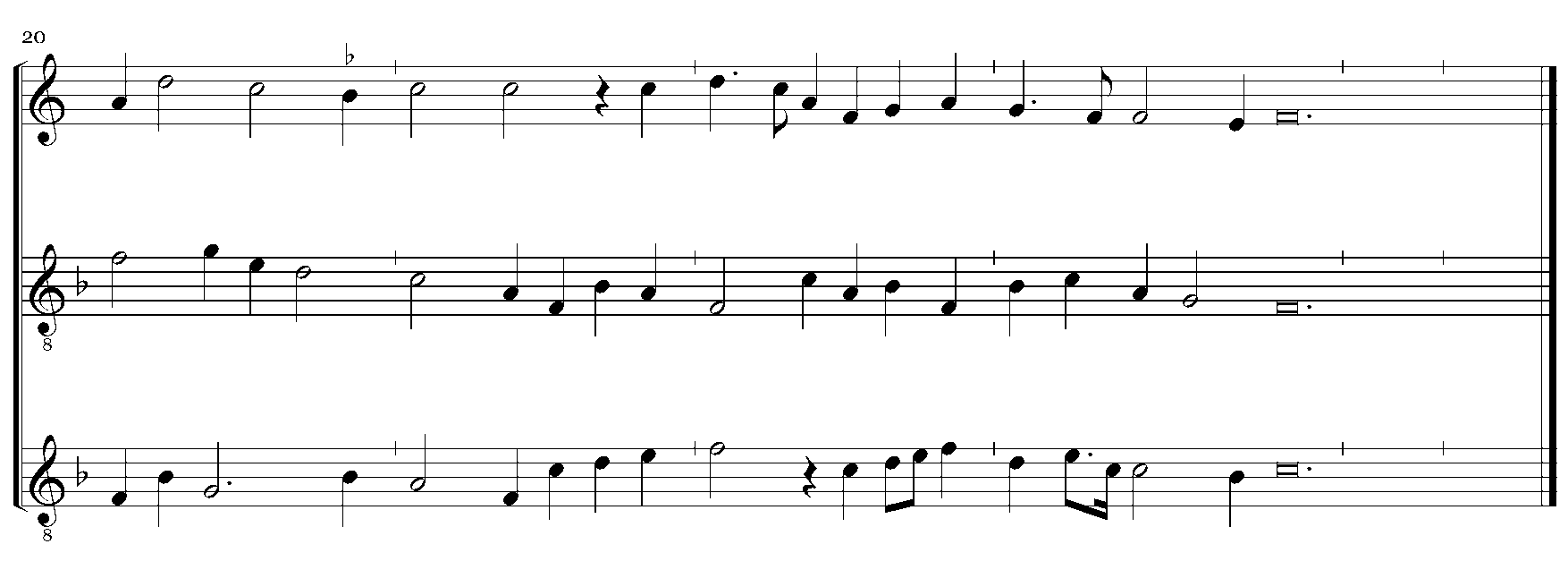Mon tout, mon souvenir, m’amye (2) 3v · Anonymous
Appearance in the group of related chansonniers:
*Dijon ff. 134v-135 »Mon tout, mon souvenir, m’amye (2)« 3v PDF · Facsimile
Text: Rondeau quatrain, full text:
Mon tout, mon souvenir, m’amye, En tous lieux, je vous certifie, Mon tout, mon souvenir, m’amye, Tendant les bras a vous s’escrie, Mon tout, mon souvenir, m’amye, |
My one and only, my sole thought, my friend, Everywhere, I assure you, My one and only, my sole thought, my friend, Holding out his arms towards you he cries, My one and only, my sole thought, my friend, |
This poem is found in a different setting in Copenhagen ff. 31v-32 (no. 27)
Except for some differences in spelling the sources have the same version of the poem. In line 12 Dijon reads: “exaucer lay ..."
Evaluation of the source:
The version of the song, which Dijon transmits, is in a way fully functional. Except for a writing error in b. 6 (d’ instead of e’) the chanson sounds quite well in performance. It seems, however, rather weird that the music in the last line (bb. 22 f) has been displaced in relation to the meter of the mensuration – it looses a minima value (see Example 1) – and the ductus of the contratenor in b. 20 seems exceptionally clumsy. It might be a sign that this ending is not as originally thought by the composer, but may represent an attempt at correction during the copying either by the Dijon scribe or during the production of his exemplar. If for example the copyist found out that the voice parts did not go together because the last note in b. 23 (a minima c’) had been left out, it was possible to bring the parts together again without erasing any music just by adding a stem to the semibrevis a’ in superius and by blackening the heads of the two minimae d’-e’ in the contratenor (turning them into semiminimae).

Example 1: Dijon no. 111, bars 20-25 as written in the MS.
Having a score at hand makes it is easy to propose a better solution as the last line in the refrain is a shortened repeat of the first line (bb. 1-8, see the edition). At the same time it is natural to replace b. 20 in the contratenor with b. 4, which allows a normal cadence to C in the upper voices.
Comments on text and music:
Maybe it is our expectations of the regularity of the learned music in the 15th century, which make us think that these editorial interventions are necessary. Contemporary listeners might find this song quite satisfactory, but the Dijon scribe was not totally convinced by it. When he wanted to insert the same poem into the repertory of the Copenhagen Chansonnier he did find another musical setting of the poem or had it made (see Copenhagen no. 27). There can be no doubt that the poem, in which an apparently rejected lover almost despairingly implores to be remembered, makes a stronger impression than the music in the Dijon version.
This rondeau quatrain is unusual in that it reuses the musical material of the first line (bb. 1-8) for the last line (bb. 19-25), creating a sort of ABCA’ form. This type of musical form does not fit a setting of a rondeau, which by nature calls for a contrast between the refrain’s two halves, the A- and B-sections, in order to enliven the pattern of repetition in the full performance of a rondeau: AB aA ab AB. To use the same music for long stretches in the two sections goes against the whole idea of the rondeau, and the ABCA-form is in the middle of the 15th century most often found in strophic settings of popular poems.
The disposition of the parts is quite normal for the period 1450-1470 showing a structural duet between superius and tenor with ranges a fifth apart and a slightly lower contratenor, which often crosses up over the tenor, and the chanson is composed in tempus perfectum. But some features disclose that the author probably was not a very experienced composer: The short spans between some cadences (see for example bb. 3 and 5); the superius and tenor parts are kept within hexachordal confines (supplemented by leading notes) - within hexachords on C or F - and use certain melodic figures characteristic of improvised polyphony, especially the progression of hexachordal degrees 5-6-5-3-1 (bb. 4 f, 14 f, and 21 f); furthermore the unvarying use of imperfect consonances (for example in bb. 15-18 where superius and tenor practically only have the thirds c’-e’ and d’-f’!). All these features point to the sort of practices and habits transferred from improvised polyphony, which we most often find in the less ambitious settings of liturgical tunes demonstrating simple cantus firmus techniques.
Normally settings of formes fixes poems have been worked out and refined on paper to such a degree that standard phrases and figures, which the author might rely on in his daily practise in improvised music, have been thoroughly hidden behind a polished surface. This is not the case in this song.
See also the comments on Copenhagen no. 27.
PWCH April 2008